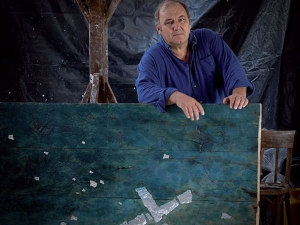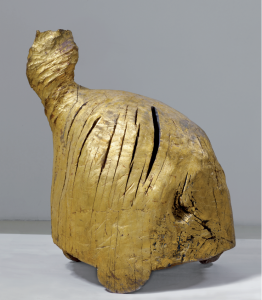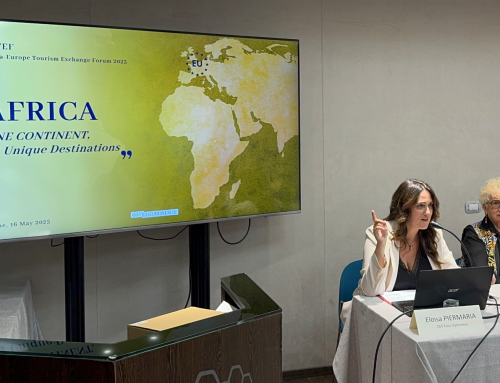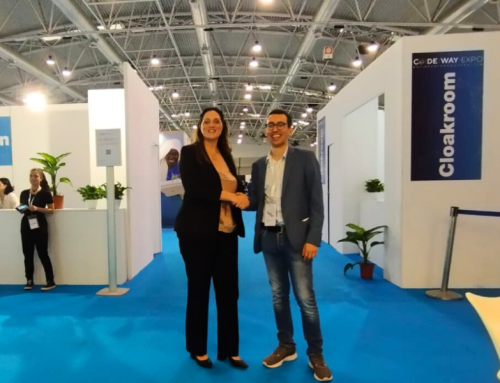 Rome April 11th – May 20th: Exhibition ‘Pilgrim in sculpture’ – Croatian sculptor Kuzma Kovačić
Rome April 11th – May 20th: Exhibition ‘Pilgrim in sculpture’ – Croatian sculptor Kuzma Kovačić
“I think his works, some of which I was able to see, were not devoid of the Holy Ghost’s intervention…”: this passage from Fishing and Fishermen’s Talk by the Croatian poet Hvar Petar Hektorović (1487-1572) was chosen to represent the exceptional sculpting art of the Croatian artist Kuzma Kovačić, whose most prestigious works were selected for a great forthcoming exhibition – for the first time in Italy – in Rome, from April 11th at the Museum of San Salvatore in Lauro – Museum Donated by Umberto Mastroianni.
The exhibition titled “Pellegrino nella scultura – lo scultore croato Kuzma Kovačić“ (Pilgrim in sculpture – the Croatian sculptor Kuzma Kovacic), aims at presenting the work of a contemporary artist inspired by Christianity, whose faith is both the source of his creations and the object modeled by them. It is a rare example in Western World contemporary visual arts. The exhibition has been set up thanks to the collaboration between the Embassy of the Republic of Croatia to the Holy See and the Ivan Meštrović Museum, and is sponsored by the Pontifical Council for Culture, represented by Cardinal Gianfranco Ravasi, and cosponsored by the Ministry of Culture of the Republic of Croatia and the City of Zagreb.
In the year of the 25th Anniversary of the recognition of the Republic of Croatia, and the start of thorough diplomatic relations with the Holy See, this is an action to promote contemporary Croatian art in Rome. Here, at the heart of Christianity, and a European center of culture, this art is promoted through works coming from a country with a rich Christian and Catholic artistic heritage and people who live their faith. It is not by coincidence that, already in the past, artists like Juraj Dalmatinac, Nikola Firentinac, Juraj Julije Klović, Franjo Vranjanin and Ivan Meštrović had created ties between the two countries, connecting the two coasts of the Adriatic Sea through art.
Kuzma Kovačić, defined the “Croatian Michelangelo”, is a rare example of Western World contemporary visual art. His works evoke his nation’s cultural history and artistic heritage. He employs his creativity in going through centuries of Croatian and Mediterranean art and sculpture tradition. Thus, he gives a significant contribution to the renovation of Croatian sculpture in the period in which the multimedia figurative production was predominant.
His creative principle is based on poetic imagination, a perspicacious sculpting method, the use of different materials and the faith in God.
Kovačić centers his research on finding new sculpting spaces in inventive forms, using different materials, from traditional and organic to modern, industrial and nonorganic ones: different types and shades of stone and wood, bronze, precious and nonprecious metals, glass, sponge, clay, stucco, canvas, paper and many more.
His expressiveness is fundamentally based on the visible transformations of the spirit materialized in new forms, not repeating in its variants nor recycling in its change, showing a profound Christian devotion. As he himself declares: “No matter if I am sculpting out of soil, an old trunk, modeling hot glass, crumpled paper, or if I were giving life to human beings, to Jesus Christ or the Virgin Mary, I have always considered my work as the confession of faith to the resurrected Human-God”.
The relationship between Art and Faith has emerged for four decades from the hundreds of works he created – from the renowned door of the Cathedral in Hvar to the coins of the Republic of Croatia, from the stunning monuments in the public spaces of his country, like the Croatian Altar of the Homeland, to the majestic bas-relieves in the sacred places. His art also brings a positive message of unity between two worlds: indeed, in the intention of the organizers “the exhibition may be able to answer the long-dating question on the separation between Church and Art, proposing a new possible unity to serve the civilization of life; of life with God.”
The exhibition, curated by Milan Bešlić, comprises a significant selection of the author’s works of art, deriving from the choice of Kovačić’s most important creations and includes 46 sculptures mainly carved in resistent materials (wood, stone, bronze, glass, clay, etc) and 15 large photos of public monuments or sacred sculptures, for a total of sixty objects.
The works come from Croatian public galleries and museums, from private collections and from the author’s collection, while the public works presented through photography are located in churches and public spaces around Croatia and Bosnia-Herzegovina.
The exhibition lasts until May 20th and will be inaugurated on Tuesday 11th April at 6 pm by Dominique François Joseph Cardinal Mamberti, Prefect of the Supreme Court of the Apostolic Signatura.






